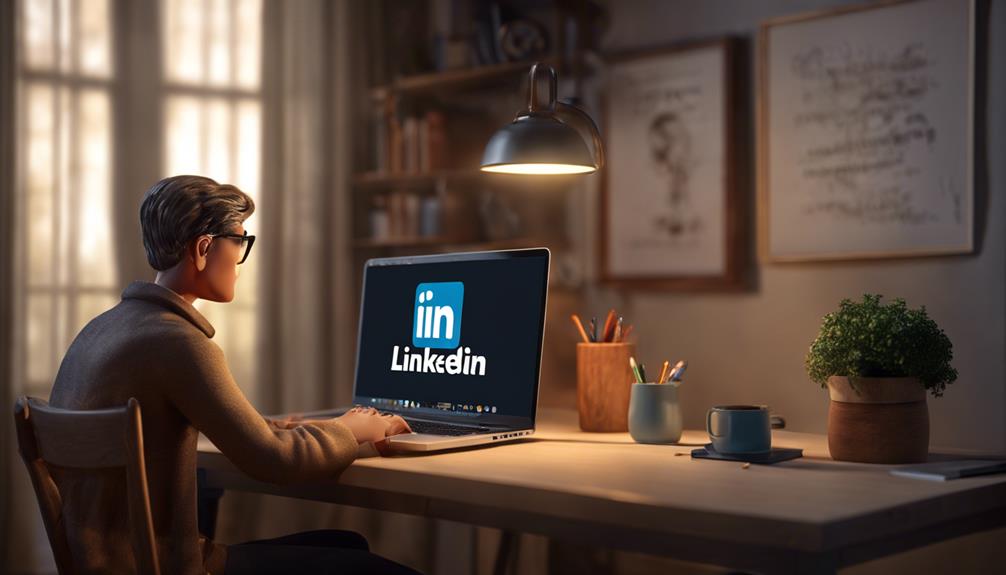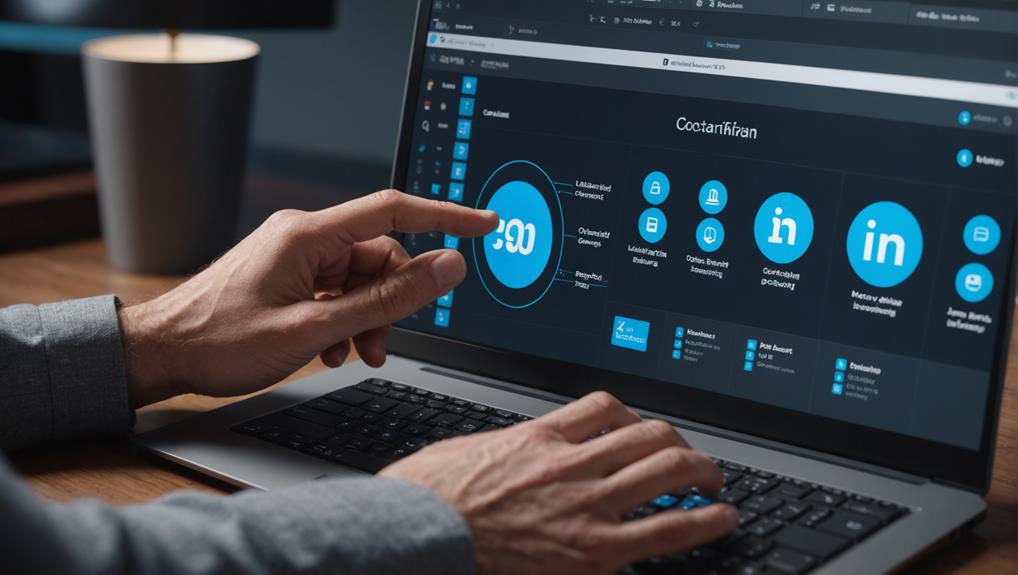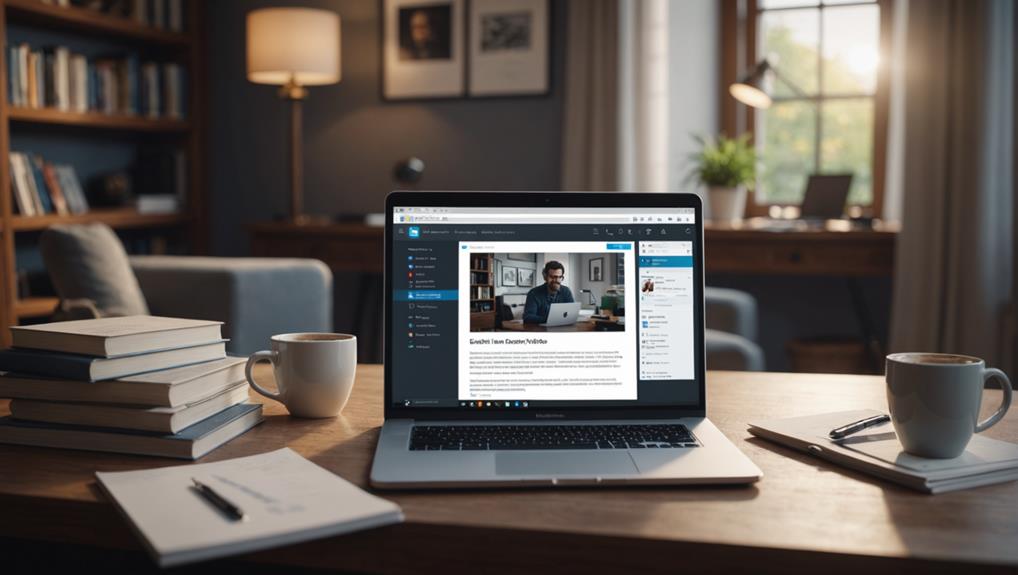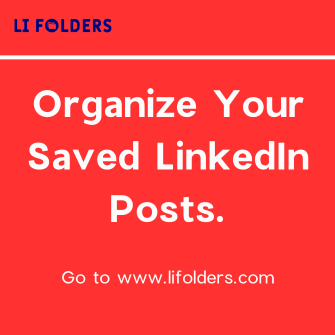
When you browse someone's profile on LinkedIn, they might know you visited depending on your settings. Usually, if you haven't adjusted your privacy controls, your name and headline could show up in their 'Who's Viewed Your Profile' section. However, you can set your browsing to private mode, which keeps your visit anonymous. This setting is perfect if you'd rather keep your LinkedIn survey under wraps. Check out 'How others see your LinkedIn activity' in your settings to adjust this feature. Your choices will balance your visibility and privacy, each affecting your network interactions in different ways. This understanding might lead you to further explore strategic profile adjustments.
Understanding LinkedIn Profile Visibility

Understanding how your LinkedIn profile visibility settings impact who can view your information is crucial for networking effectively. When you're part of a platform as vast as LinkedIn, feeling like you belong in the professional community can significantly enhance your comfort and confidence. This understanding becomes your key to controlling how you connect and interact within your industry circles.
Firstly, you'll want to navigate to the settings on your LinkedIn profile. Here, you can adjust who sees your profile details, such as your job history, educational background, and your list of connections. If you prefer keeping certain aspects private, you can set these to be visible only to your direct connections. This selective sharing helps you maintain privacy while still being part of the broader community.
Moreover, tweaking these settings can influence your outreach. When you allow your profile to be more visible, you're more likely to attract potential employers, collaborators, or mentors who are searching for professionals like you. It's all about finding the right balance that aligns with your personal comfort and professional goals. Remember, every adjustment you make helps shape how you're perceived and how effectively you can network.
Who Can See Your Profile Views?
Now let's explore who can see when you've viewed their LinkedIn profile. Understanding this will help you feel more connected and less isolated in your professional networking. When you look at someone's profile, LinkedIn can notify them, depending on your settings and theirs. If you're using a basic account, and so is the person whose profile you've checked, they might see your name and headline if you haven't adjusted your privacy settings. This transparency aims to foster openness and trust within the professional community.
However, if the person you visited has a Premium account, they receive more detailed insights, including the number of times you've visited. This feature supports professionals in building more meaningful connections, as it highlights who is genuinely interested in their skills or business.
Adjusting Your Visibility Settings

You can control who sees when you visit their profile by adjusting your visibility settings on LinkedIn. This feature is crucial for maintaining the type of interactions you want within your professional network. It's all about finding a balance that feels right for you and allows you to connect with others in a way that supports your career goals.
To adjust these settings, simply navigate to your profile and select the 'Settings & Privacy' option. From there, you'll find a section labeled 'How others see your LinkedIn activity'. This is where you can manage your visibility. You've got options: you can make your profile visits completely anonymous, leave a limited trace, or fully reveal your identity when you browse other profiles.
This flexibility helps you fit in, whether you're actively job searching, seeking business opportunities, or just keeping an eye on industry trends without making it obvious. It's like being at a networking event and choosing who you exchange business cards with. You're part of the community, engaging on your terms, which can make all the difference in how you're perceived and how comfortable you feel within your professional circle.
Implications of Remaining Anonymous
While opting to remain anonymous on LinkedIn can shield your identity, it may also limit the depth of connections you're able to forge. By hiding your presence, you're missing out on the opportunity to fully engage with others and build meaningful relationships. You see, when you interact openly, people feel more invited to connect with you, share their experiences, and offer support. This mutual exchange fosters a sense of community and belonging that's hard to achieve if you're always a shadow in the background.
Remaining hidden might keep you safe from unwanted attention, but think about the networking opportunities you're sidelining. LinkedIn thrives on the visibility of its users. It's a platform designed for professionals to showcase their skills, achievements, and aspirations. By stepping out of the shadows, you open doors to potential mentors, partners, or even future employers who are essential to your professional growth.
Consider this: each interaction on LinkedIn can be a stepping stone toward enriching your career path. Don't hold yourself back by staying anonymous. Embrace the community around you, and you'll find that the rewards of being visible far outweigh the comfort of anonymity.
Tips for Discreet LinkedIn Browsing

If you prefer to browse LinkedIn profiles without alerting others, consider activating private mode in your settings. This feature ensures you're part of the community without leaving a digital footprint on every profile you visit. It's like being at a networking event, mingling quietly, and gathering insights without the pressure of immediate introductions.
To activate this, simply go to your profile, select 'Settings & Privacy,' and find the 'How others see your LinkedIn activity' section. Here, you can switch your profile viewing options to 'Private mode.' You won't be visible to the people whose profiles you check out, and they won't see details such as your name or where you work.
Remember, while private mode keeps your identity anonymous, it also limits your ability to see who's viewed your profile unless you opt for a premium account. Think of it as a trade-off for maintaining your privacy.
Additionally, consider timing your profile updates. Updating your profile right after browsing can sometimes suggest to others that you've been active on LinkedIn. Instead, make your changes during less active hours or in bulk to stay under the radar while still being part of the vibrant LinkedIn community.
Conclusion
You've got the tools now to control your visibility on LinkedIn. Remember, tweaking your settings can keep your identity hidden when you're browsing. But think about the implications—staying anonymous might affect how others perceive your interest and engagement. To keep things discreet yet effective, adjust your profile settings before deep-diving into other profiles. It's all about balancing curiosity with professionalism. So, go ahead, manage your presence wisely and browse with confidence!






